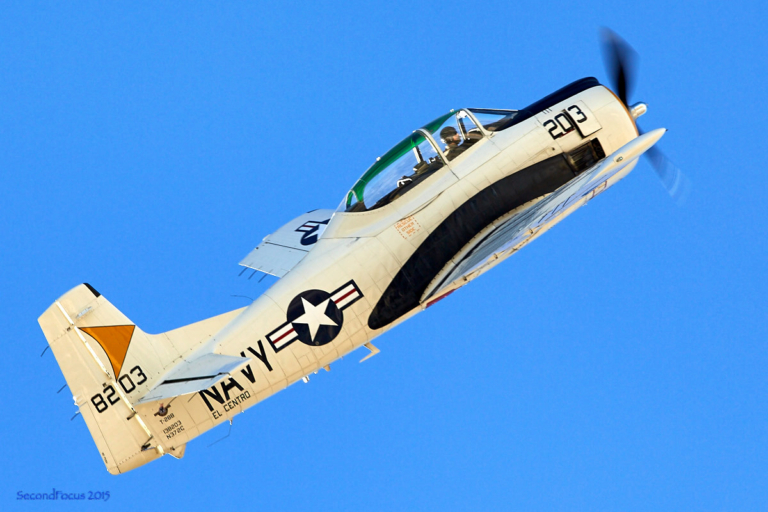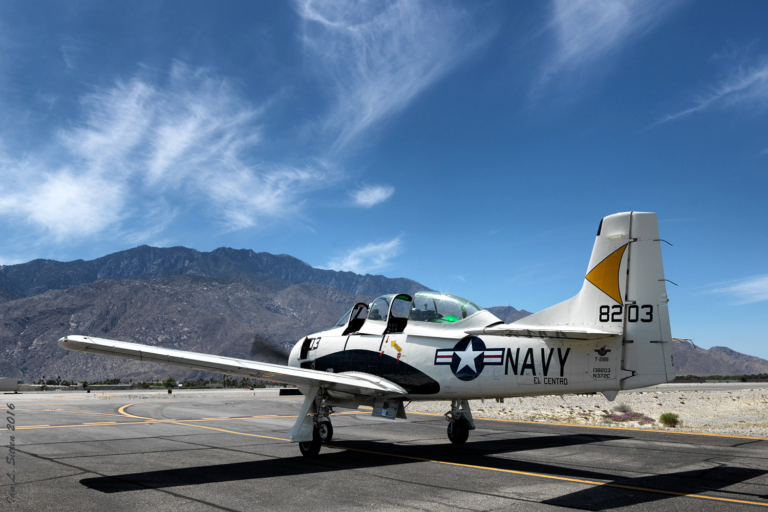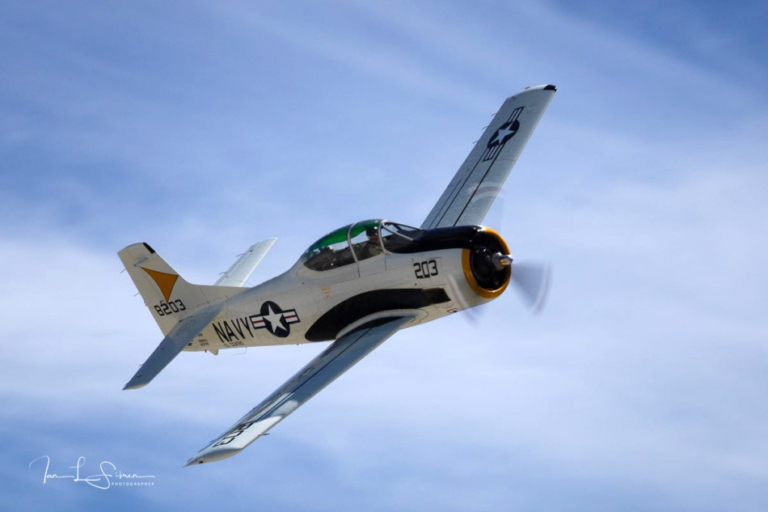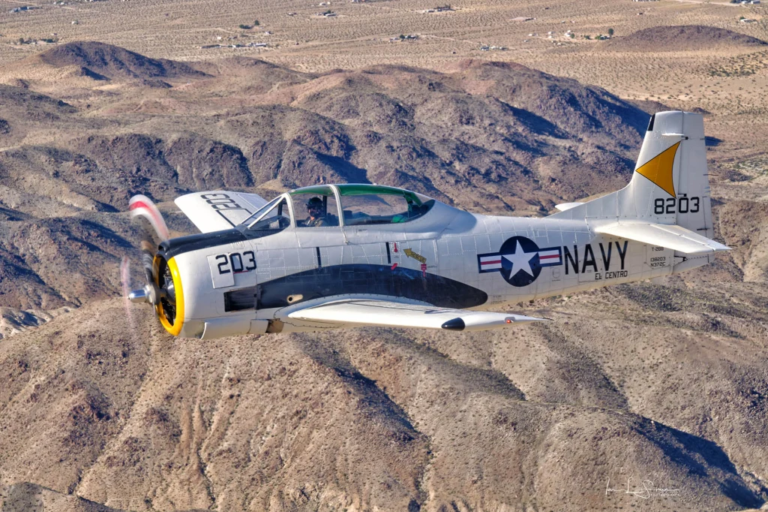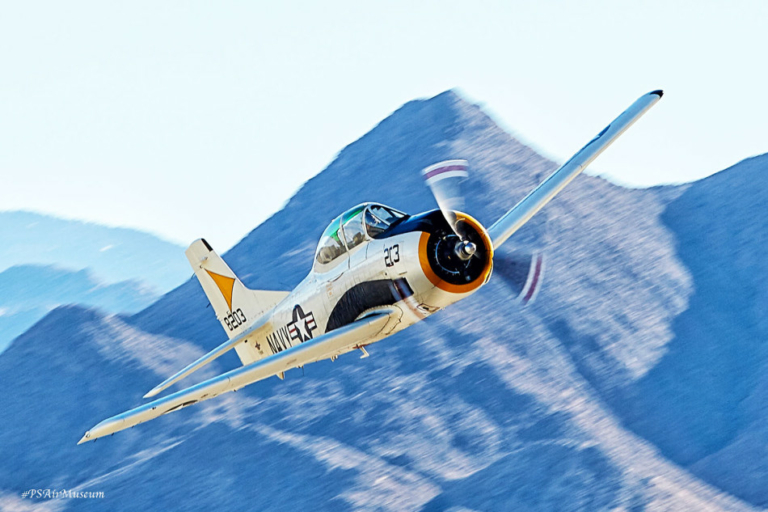T-28 Trojan
CHARACTERISTICS
- Crew: 2
- Length: 33 ft
- Wingspan: 40 ft 1 in
- Powerplant: 1 x Wright Cyclone R-1820-86 radial piston engine
- 1,425 hp
- Maximum speed: 343 mph
- Rated cruise speed: 230 mph
- Range: 1,060 mi
- Service ceiling: 35,500 ft
HISTORY
Designed to replace the World War II era T-6 trainer, the T-28 possessed higher performance than its forerunner and was easier to maintain.
The first T-28 flew in September 1949, and the T-28A entered production in 1950. An 800- hp engine powered the U.S. Air Force version (T-28A) while the later U.S. Navy versions (T-28B and C) were powered by a 1,425-hp engine. The Trojan’s tricycle landing gear taught pilots to take off and land in the same fashion as the high-performance aircraft they were training to fly. When production ended, North American had built a total of 1,948 T-28s. Beginning in 1962 the USAF modified more than 200 T-28As as tactical fighter-bombers for counterinsurgency warfare. Equipped with 1,425 hp engines, these airplanes (re-designated the T-28D “Nomad”) were effective weapons for close air support against enemy troops in Southeast Asia.
The USAF replaced the T-28 as a primary trainer in the mid-1950s with the piston-engined Beech T-34 Mentor and jet-powered Cessna T-37. Trojans, however, continued to be flown by the Air National Guard until the late 1950s, and by the U.S. Navy into the 1980s.
BOOK YOUR T-28 RIDE NOW!
The soonest available flight is shown below. We book them all back-to-back to be as efficient as possible. Once one slot is filled, the next slot will open up.
~ Do not refresh the page or hit the back button while payment is processing ~

DISCLAIMER/FAQ
- Passengers who cannot board the aircraft without assistance will not fly. You must be capable of climbing and descending the equivalent of a standard ladder.
- Must be able mentally and psychologically able to follow instructions. Must be sober and fit to fly!
- Passengers must be 13 years of age or older. Minors who fly (age 13-17) must have their parent or guardian complete a Participant Release for Minors. The parent or guardian must be present for the flight.
- The physical restrictions for all planes (other than the C-47) are: 6’5,” and 250 lbs. or smaller.
- All passengers are required to complete a Participant Release.
- Flights may be canceled due to weather, mechanical, or crew availability.
- For safety, all passengers must wear closed-toe shoes. No sandals or flip-flops will be allowed. Long pants are recommended.
- NO Firearms, Pepper or Chemical Sprays, Stun Devices or weapons of any kind are permitted on the aircraft.
- No animals are permitted on the aircraft.
- Large backpacks, shoulder bags, duffel bags, tripods or other bulky items are NOT permitted on the aircraft.
- No smoking and no vaping devices are allowed on any of our aircraft.
- No portable oxygen assistance devices are permitted.
If you have questions or concerns, please email
giftshop@palmspringsairmuseum.org


